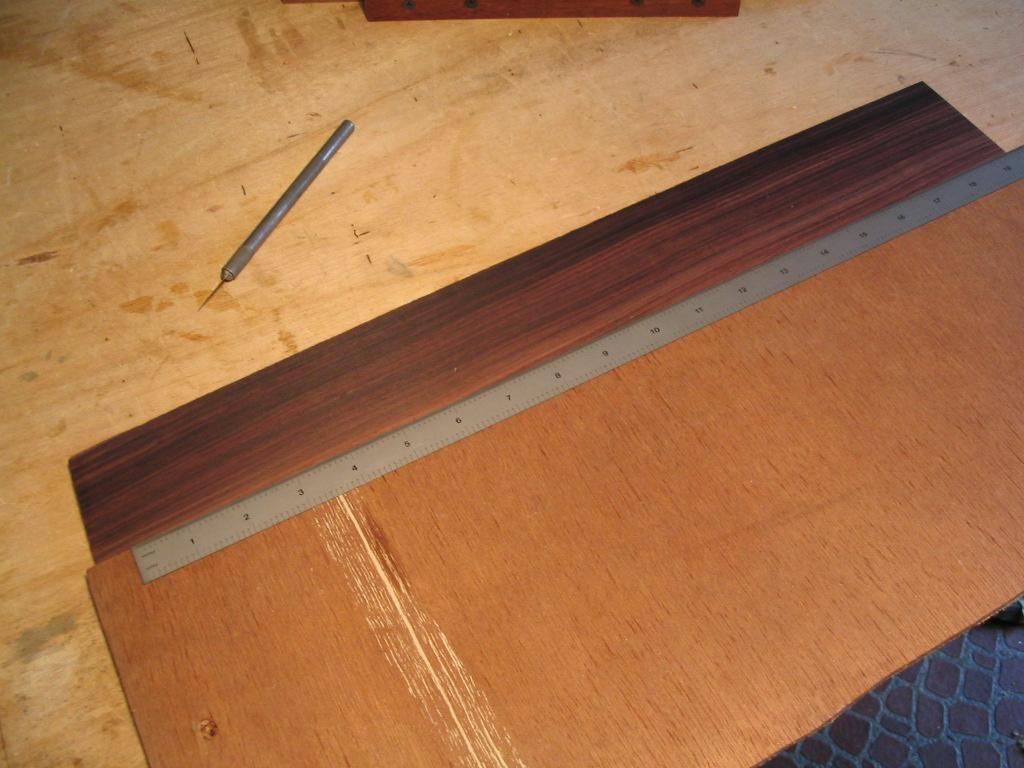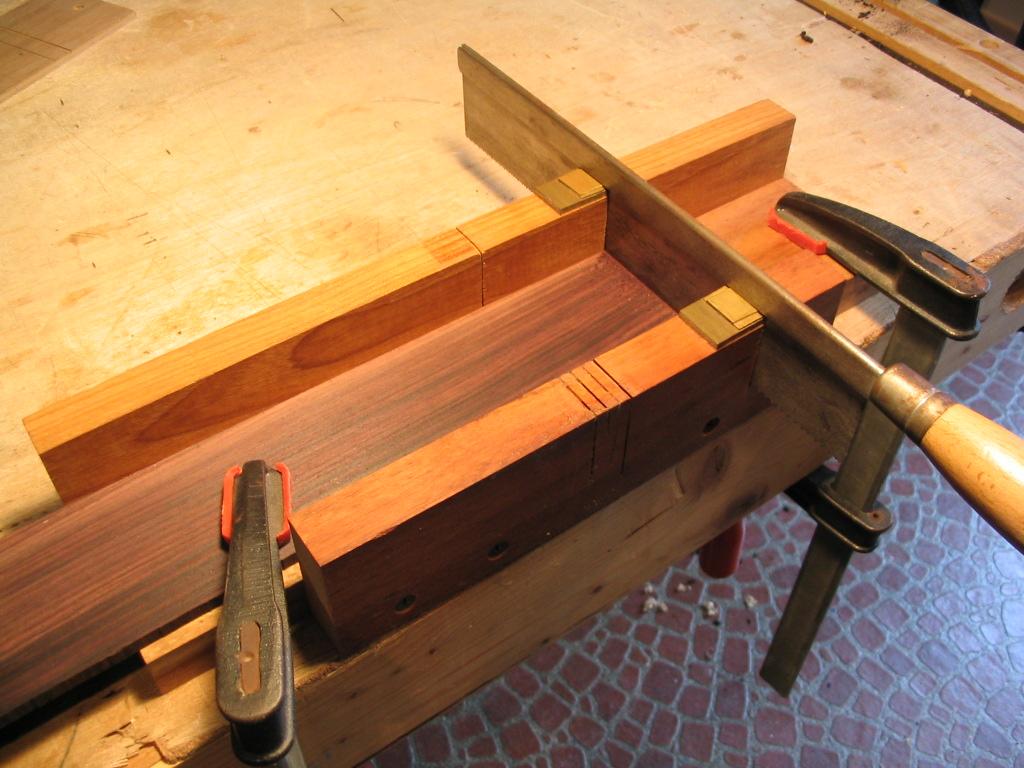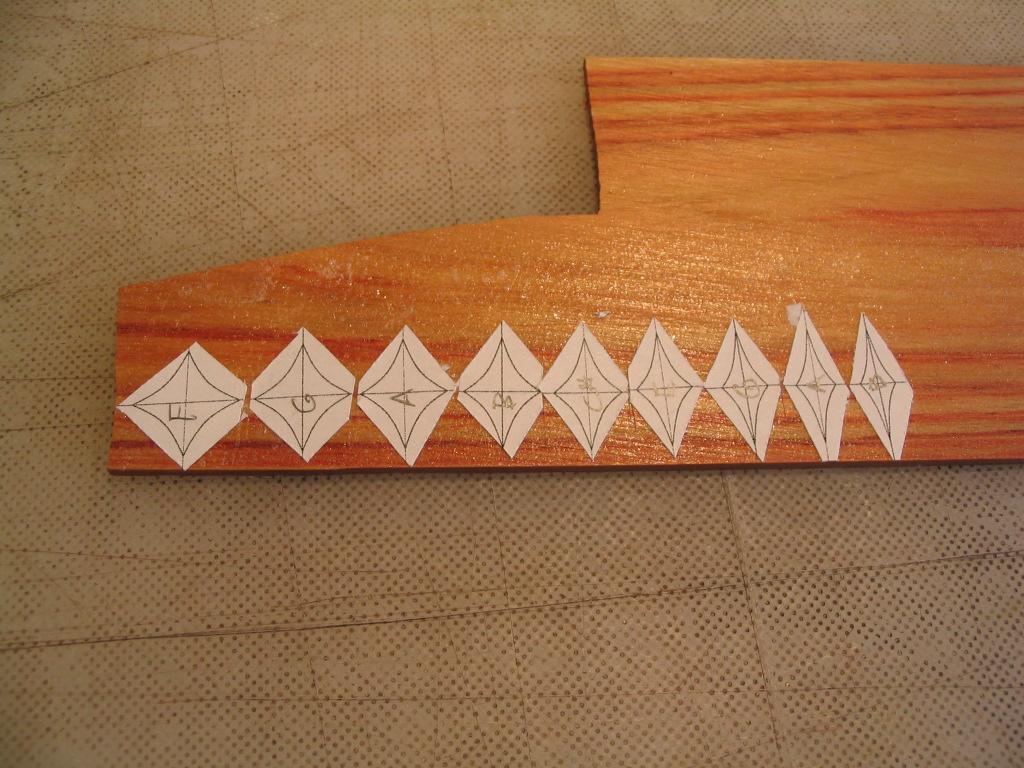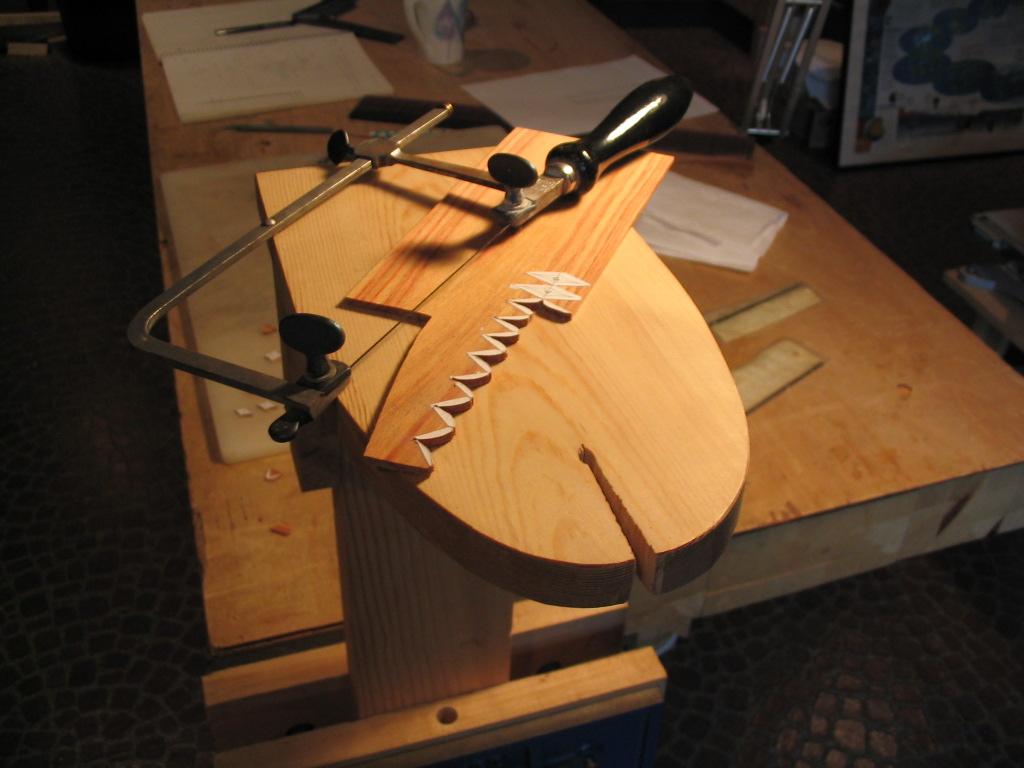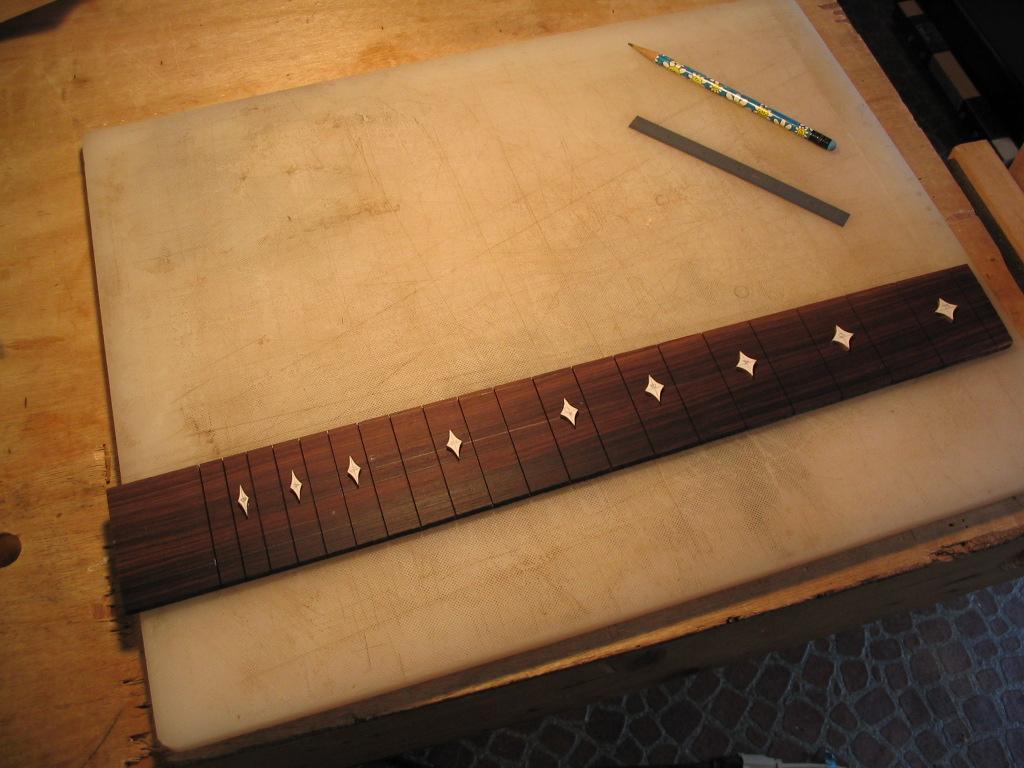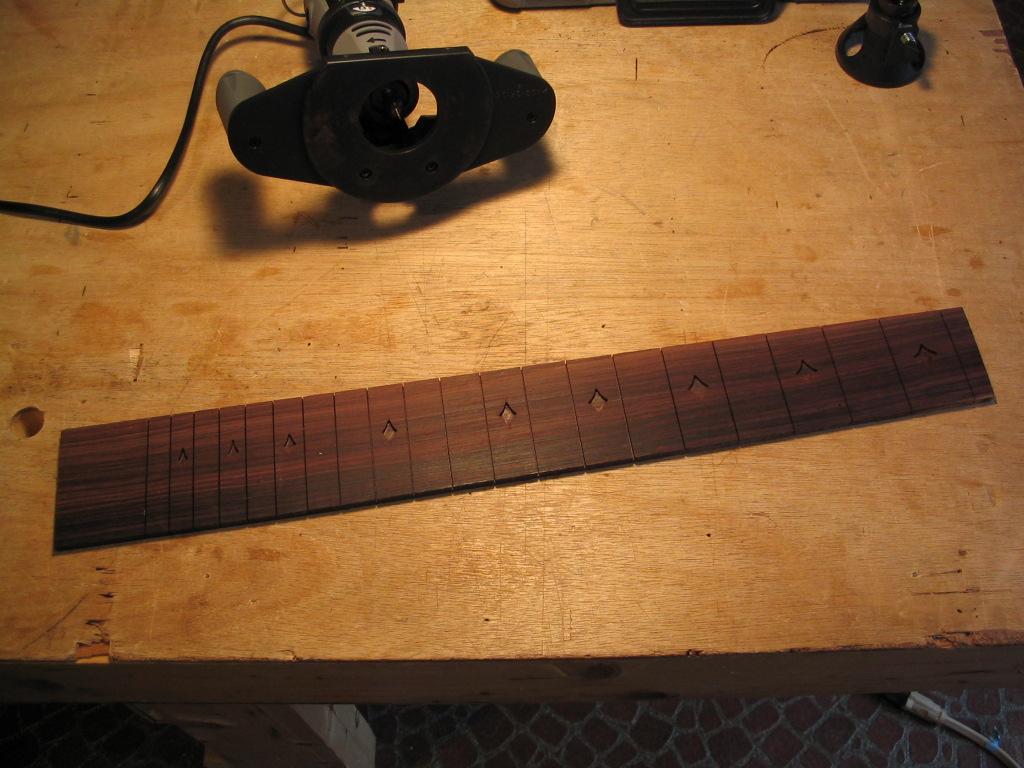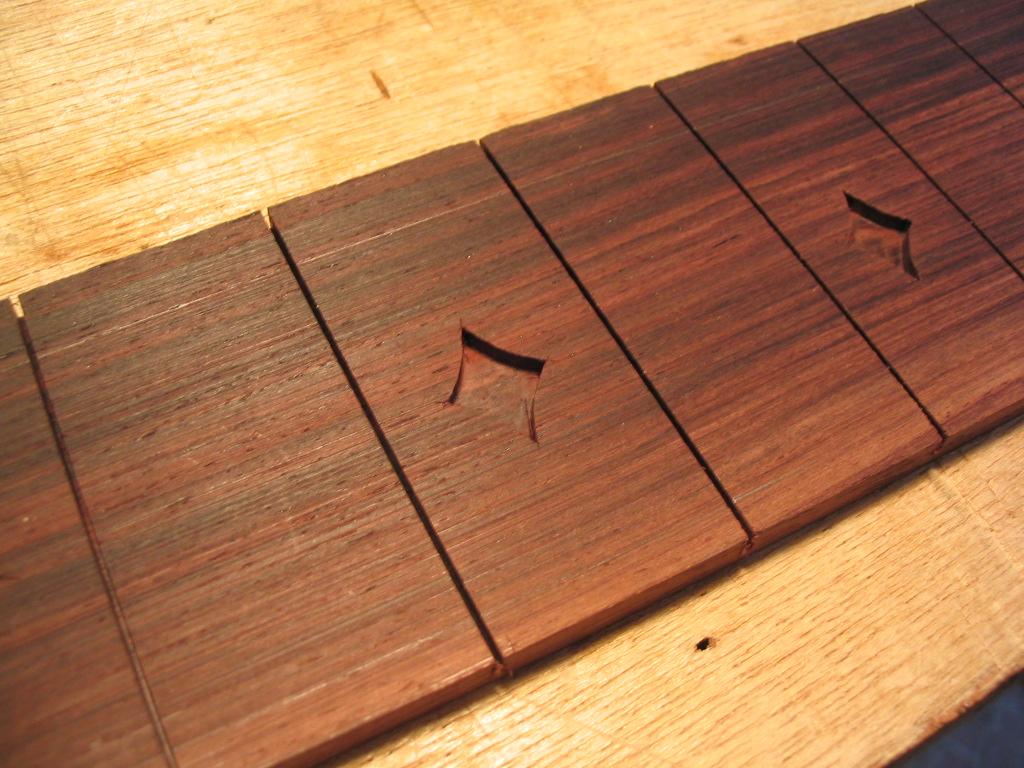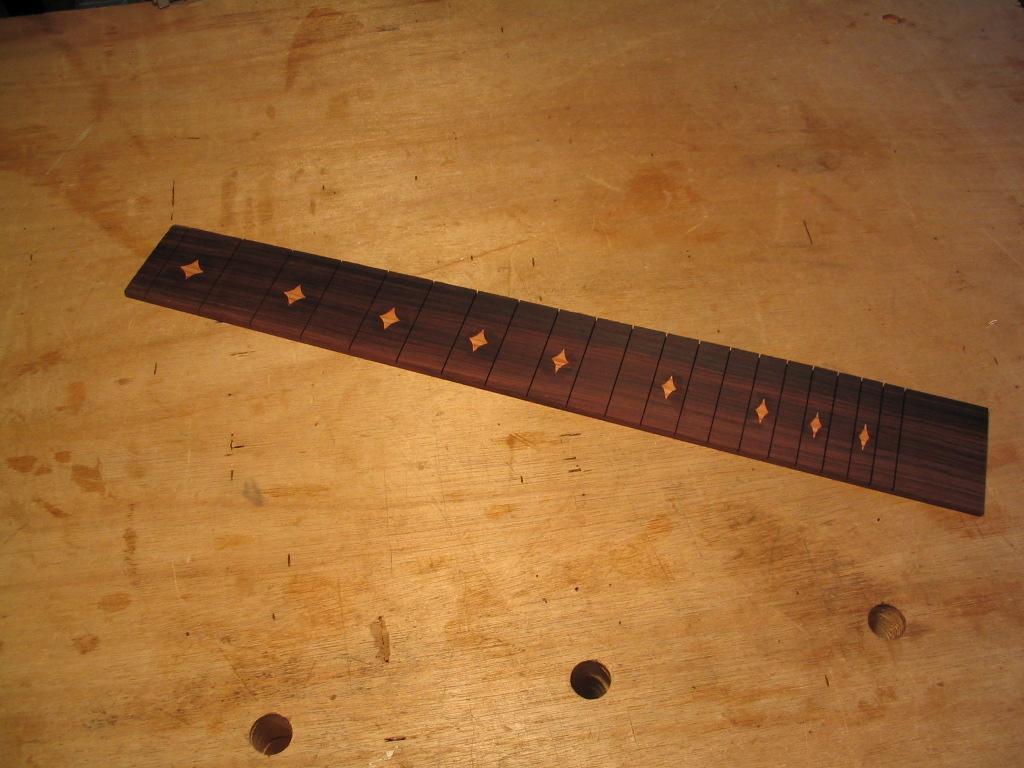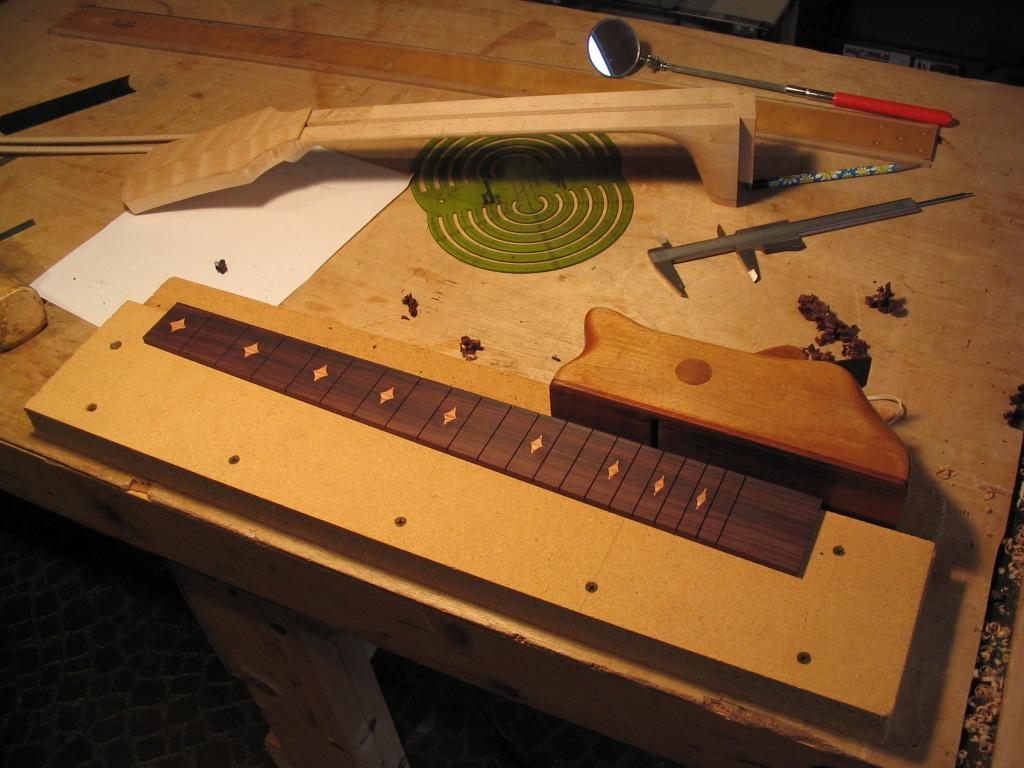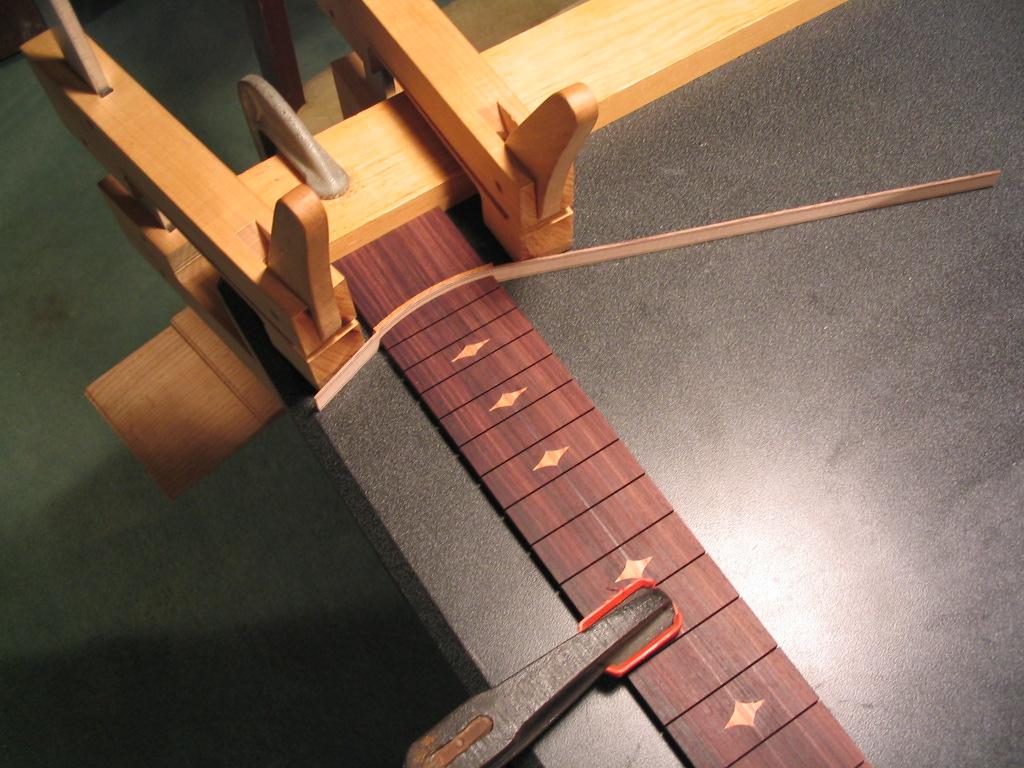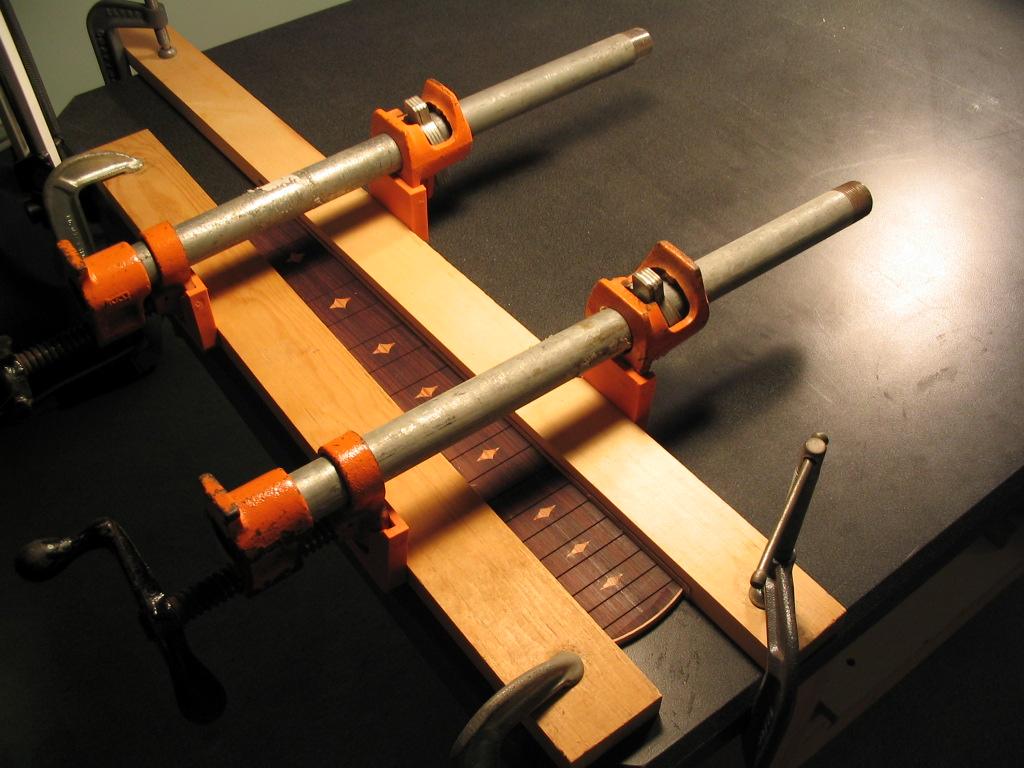The fretboard is generally made of quartersawn rosewood or ebony, and has a finished thickness of approximately .250″. After being thinned to the correct thickness, one side of the fretboard is trued to act as a reference edge when cutting the fret slots. The positions of the fret slots are marked on the fingerboard blank using a ruler graduated in 1/100ths of an inch. This level of accuracy is sufficient to ensure the correct intonation of the fretted notes.
The positions of the frets are based on the 12th root of 2, and depend on the scale length chosen for the guitar. There are a number of fret-position calculators available on the web; a spreadsheet that calculates the positions is available here.
The fret slots are next cut using a custom miter box. The slots are cut with a dovetail saw whose kerf is the correct thickness for the frets. Since I use an epoxy fretting method, the kerf is equal to the width of the fret tang plus the barbs on the sides, so the fret will slip into the slot with little resistance. The epoxy will fill the rest of the slot, forming a casting around the tang and barbs to hold the fret securely in the slot. Traditionally, the fret has been hammered into the slot, with the barbs gripping the sides of the slot to hold the fret in, and the slot has consequently been cut to the width of the tang not including the barbs. But hammered-in frets are prone to “popping” out of the slots since they’re held just by the barbs, so I prefer the epoxy method.
The fret slots need to be deep enough to accommodate the depth of the tang, but taking into account that the fretboard surface will be arched side-to-side. Thus the slots need to be somewhat deeper than the depth of the tang.
Once the fret slots have been cut, the fret position markers can be inlaid into the fretboard. The markers are usually placed at the F, G, A, B, C#, E, G, A and B fret positions. Rather than using simple dots or some other identical shape for each marker, I use software called Fretmarker Design to design the inlays. This program allows the basic shape of the inlay to be designed, and then scales it in size to the corresponding fret rectangles. Thus the diamonds in the photo below decrease in height and increase slightly in width as they go up the fretboard.
The fretmarker designs are glued to the marker material using spray adhesive. In this case, the fretmarker material is 1/8″ tulipwood. Other materials commonly used for inlays are abalone and mother of pearl.
The inlays are cut out using a jeweler’s saw and a “bird’s mouth”, a platform with a small slot and hole to support the fretmarker material while sawing.
The inlays are then placed on the centerline of the fretboard, and their outlines scribed with an Xacto knife. I attach the inlays to the fretboard with spray adhesive to keep them from slipping while scribing.
The recesses for the inlays are routed using a Dremel tool with router base attachment and small bits. The depth of the recesses is set to be slightly less than the thickness of the inlay material so the inlays will sit very slightly above the fretboard surface and can be pared flush after gluing.
Since the bits can’t reach into the sharp corners of the design, these must be finished with an Xacto knife.
The inlays are then glued into the routed recesses. The bottom edges of the inlays are chamfered slightly to allow them to enter the recesses more easily, and the inlays are pressed into the recesses using a hand clamp. The inlays are then pared flush with the surface of the fretboard using a sharp chisel.
With the advent of inexpensive CNC routers, it’s now feasible for a small builder to use CNC to perform the inlay cutting and routing operations instead of doing these by hand. The process for doing so is described in another article on this website.
The fretboard is next cut and planed to the appropriate width; note the use of a shooting board in the photo below to keep the edges of the fretboard square. The width at the nut and 14th fret (where the neck joins the body) are measured on the neck with a veneer caliper, and used for the corresponding fretboard widths. However, since binding will be applied to the fretboard, the thickness of the binding is subtracted from the widths in tapering the fretboard. I try to match the neck widths to within a few thousandths of an inch.
The body end of the fretboard is cut next. The length must be determined so the fretboard doesn’t extend over the soundhole, but covers the gap in the rosette at the top of the body. The fretboard binding material is then glued to the bottom edge of the fretboard. The binding material is taller than the thickness of the fretboard, and will be trimmed flush after gluing. Here the cutoff piece from the bottom of the fretboard is used as a caul (with a thin piece of cork on the contact surface – you can get sheet cork at an auto parts store, where it’s sold as a gasket material, or at the local hobby supplier).
The fretboard binding is next glued to the sides of the fretboard. Any glue squeeze-out that gets into the fret slots should be removed with a thin blade – I use an Xacto knife blade with the edge ground flat. When the glue is dry, the binding can be trimmed flush with the surface of the fretboard.

Previous: Carving the neck |
Next: Attaching the neck and fretboard to the body |
